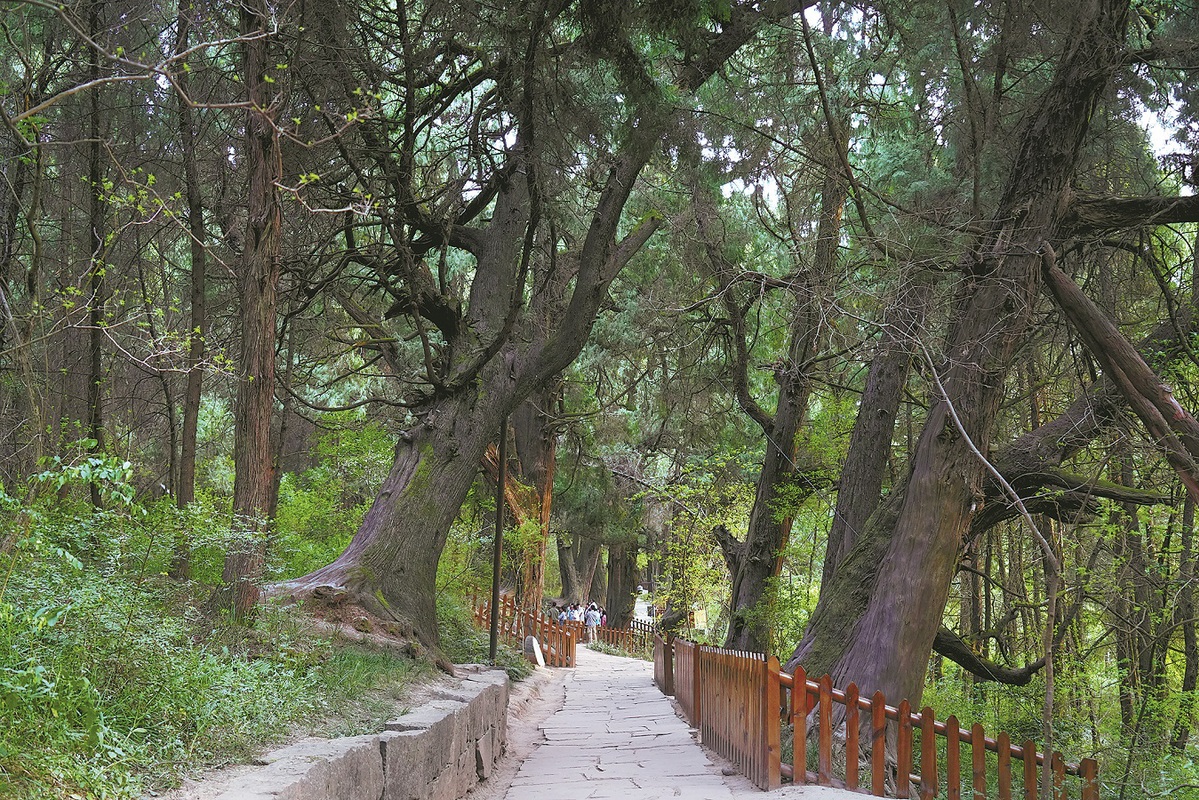Ancient roads paved foundation of national unity
Research reveals Shudao network's role in connecting people from different areas, cultures






Archaeological horizons
In March 2024, a large-scale archaeological project focusing on Shudao was launched following the fourth national census. The project not only covers Sichuan, but also extends to nearby Chongqing municipality as well as Shaanxi and Gansu provinces.
Archaeological research institutes from the four provincial-level regions joined hands to establish a uniformed format for research for the project.
For example, the archaeologists focus on a 50-meter zone on both sides of a route to collect information and relics, and criteria have been standardized to classify the findings.
"This could set a national example for research of ancient road ruins and the lineage of cultural heritage sites," said Zheng Wanquan, an associate researcher at the Sichuan Provincial Institute of Cultural Relics and Archaeology who co-hosted the project.
By April this year, sections of Shudao totaling 2,073 km, and 1,034 heritage sites along its routes — including plank road ruins, bridges, and temples — had been investigated. Among them, 297 sites were newly found.
Many names of the sections are connected to famous stories in Chinese history.
On Chencang route, Liu Bang, the founding emperor of the Han Dynasty (206 BC to AD 220) confused his adversary and mobilized a mighty army.
Qishan route was where the renowned 3rd-century strategist Zhuge Liang regretted his failed expeditions and unfulfilled ambitions to unite the nation.
On Lizhi route, galloping horses carried gifts of lychees from Tang Dynasty emperor Li Longji to a beloved concubine, giving the road its name, as lizhi means lychee.
Also, inscriptions on tablets tell how local governments and residents built and managed the roads and the roles played by many unsung heroes.
"We compare plank roads and bridges in various forms on different sections," Zheng said. "They fully demonstrate the complexity of Shudao and how the builders throughout history showed their creativity and craftsmanship in construction."
Studies of the heritage sites and written records, including chronicles, literature, and other documentation, may help portray everyday life along the rugged routes.
Rich documentation on Shudao and its ruins exists for the periods after the Qin (221 to 206 BC) and Han dynasties, Zheng said. Back then, rulers of powerful, united central dynasties in China had begun to build roads connecting Sichuan with the rest of the country.
"We can use the heritage of the roads to link the scattered dots," he said. "However, before that period, clear historical recordings are insufficient. We mainly refer to excavations and look for clues from under the ground. The dotted discoveries will join into lines and thus point where the roads went."
Shudao roads might have originally been regional roads, that later became part of a national road network.
Li Yanfeng, an associate researcher at the Shaanxi Academy of Archaeology, led a team to unearth a surprise discovery at the Liangluping site near the Chencang route in Baoji, Shaanxi.
Excavated tombs and pottery at the site indicate they are over 3,000 years, and existed before the Western Zhou Dynasty (c. 11th century to 771 BC) was established to rule a vast territory centered on Shaanxi.
"Thanks to roads over the mountains, Zhou people were found to have settled in the river valley (to the south)," Li said. "We also discovered relics from various historical periods on the site, which proved the crucial role the road played in south-north communication."



















